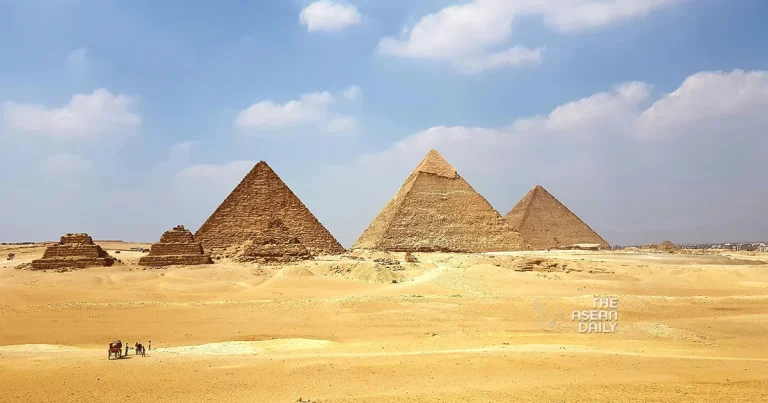17-5-2024 (CAIRO) Archaeologists believe they have uncovered a key secret behind the construction of one of the world’s greatest wonders. Approximately 4,700 years after the beginning of the pyramid-building era in Egypt, including the iconic Great Pyramids of Giza, new findings suggest these structures may have been erected alongside an ancient, now-lost branch of the Nile River.
The recently discovered evidence indicates that this 40-mile (64-kilometre) offshoot of the Nile facilitated the transportation of construction materials to the pyramids, which were built over a millennium. This revelation could elucidate why the pyramids are concentrated in what is now a narrow and arid strip of the Saharan Desert.
“Many who study ancient Egypt have long believed that the Egyptians utilised a waterway to transport the massive stones and materials needed for their monumental structures, such as the pyramids and valley temples. However, the exact location, dimensions, and proximity of this waterway to the pyramid sites remained uncertain,” explained Eman Ghoneim from the University of North Carolina Wilmington, USA.
Ms Ghoneim and her team employed satellite imagery to locate a branch that seemingly ran near the foothills of the Western Desert Plateau, close to the pyramids. They corroborated their findings through geophysical surveys and sediment core analysis, which confirmed the presence of river sediments and ancient channels beneath the current surface.
“Our research provides the first extensive map of a significant ancient branch of the Nile and connects it to the largest pyramid fields in Egypt,” she added.
The researchers propose that an accumulation of windblown sand, associated with a major drought beginning around 4,200 years ago, contributed to the branch’s eastward migration and eventual silting up.
Publishing their findings in the journal Communications Earth and Environment, the researchers state: “We identify segments of a major extinct Nile branch, which we name the Ahramat Branch, running at the foothills of the Western Desert Plateau, where the majority of the pyramids are situated.
“Many of the pyramids, dating from the Old and Middle Kingdoms, feature causeways that lead to this branch and end at Valley Temples, which may have functioned as river harbours in the past.
“We suggest that the Ahramat Branch was crucial in the construction of these monuments, serving as a vital waterway for the transportation of workmen and building materials to the pyramid sites.”




